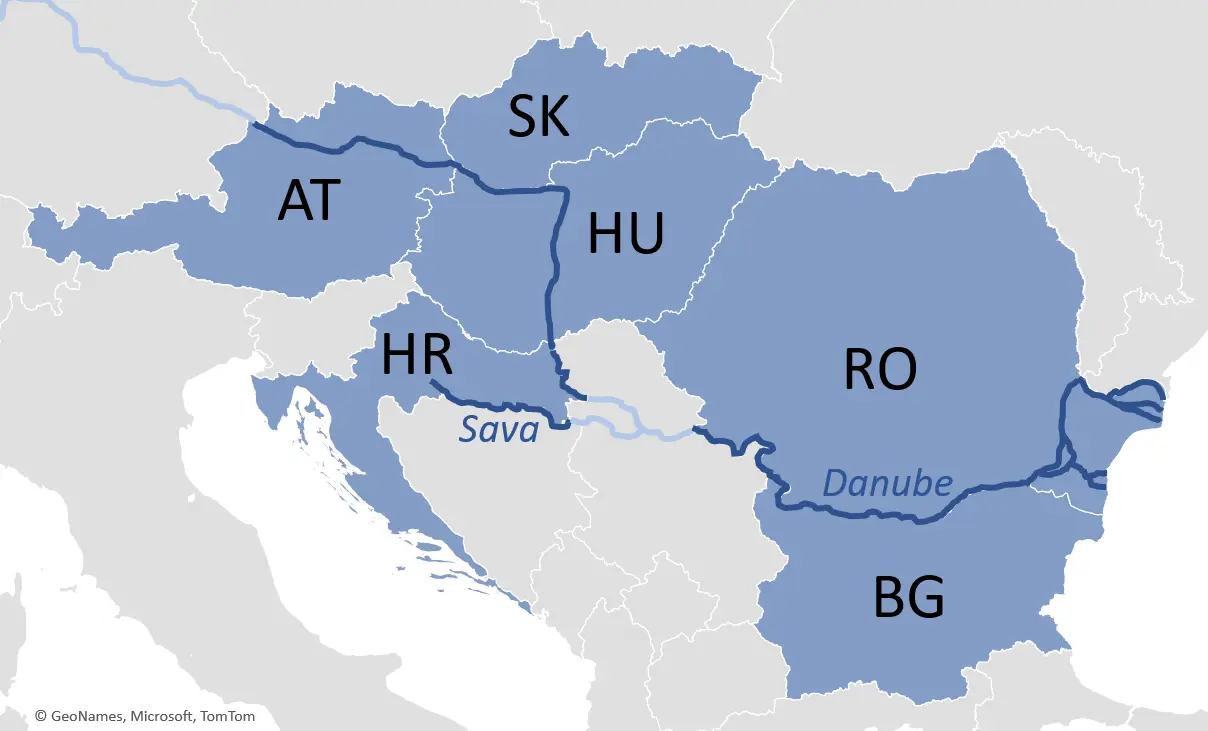
FAIRway Danube II is a transnational project with the involvement of Austria, Slovakia, Hungary, Croatia, Bulgaria and Romania that aims to increase the fairway conditions on the Danube and make inland navigation more climate resilient, sustainable and attractive.
The project will be realised between April 2023 and December 2027.
Project Background
FAIRway Danube II is a follow-up project of the CEF flagship FAIRway Danube (www.fairwaydanube.eu) that already significantly increased the knowledge on shallow sections and drafting of rehabilitation measures. Moreover, the FAIRway project includes the ongoing Preparing FAIRway 2 works and FAIRway works! that also increase infrastructure and monitoring systems on the Danube.
FAIRway Danube II, valued at 70 million euros (47 million euros EU funding), officially approved by the EU in June 2023, will continue the successful course in terms of fairway modernization along the Danube for the coming years.
European Inititiatives
This project will also contribute to the implementation of the Fairway Rehabilitation and Maintenance Master Plan adopted by 10 Danube Ministers of Transport (June 2022) and which is also referred to in the Rhine-Danube Corridor Work Plan of the European Coordinator.
FAIRway Danube II continues where its predecessors already initiated important developments, but also includes a number of innovative measures towards further holistic modernization of the fairway.
The planned tasks and objectives of FAIRway Danube II:
- Implementation of regular transnational monitoring of fairway conditions
- Procurement of sensors for measuring water levels, fairway depths and bridge clearance heights
- Upgrading the national waterway management systems (WAMS) and the transnational waterway monitoring system (WAMOS 2.0) to increase their performance and efficiency and to improve information provision to users
- Extending the lead time of water level forecasting – a key tool for logisticians
- Testing flexible infrastructure elements in Austria, Croatia, Romania and Bulgaria. This unique approach will provide a non-invasive, near natural solution for low water periods, as it can be used to flexibly influence fairway depth. In this way, the reliability of inland navigation will be improved without any permanent impact on habitats and ecosystems.
- Modernization of existing mooring places in Austria and Romania to improve infrastructure, especially in terms of crew safety and mobility. The work also includes green energy solutions for shore power at each mooring place.
Plans are also being developed for additional investments in mooring places in Austria, Slovakia and Croatia.
Co-funded by the European Union. Views and opinions expressed are however those of the author(s) only and do not necessarily reflect those of the European Union or the European Climate, Infrastructure and Environment Executive Agency (CINEA).
Neither the European Union nor CINEA can be held responsible for them.


